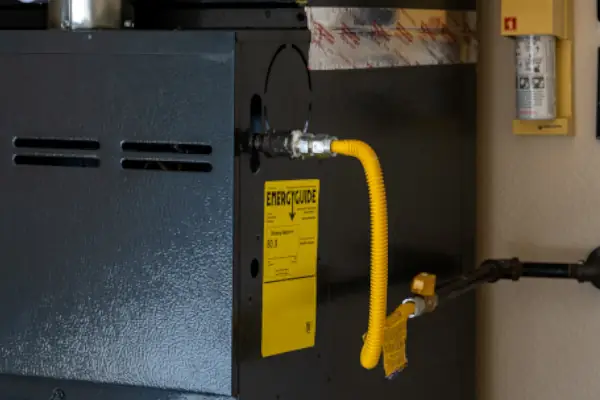Carbon monoxide is an invisible menace that lurks in many homes and buildings. This toxic gas has no smell, no taste, and no color – but it can be dangerous and even fatal. Understanding where carbon monoxide comes from, how to avoid exposure, and what effects it can have on your health is crucial knowledge for staying safe. In this article, we’ll dive into the key facts about carbon monoxide, from its sources to its symptoms and prevention methods. By being informed about this hidden hazard, you can take the necessary precautions to protect yourself and your loved ones.
What Are The Effects of Carbon Monoxide?

Let’s start with effects of carbon monoxide poisoning. It’s important to know the symptoms of carbon monoxide in order to know what to look out for, especially in the absence of a carbon monoxide detector
Effects of mild carbon monoxide poisoning include headaches, dizziness, nausea, and fatigue. At lower levels, CO exposure can cause flu-like symptoms that are easily mistaken for something else.
With severe carbon monoxide poisoning, the effects can be and potentially life-threatening. High levels of exposure can quickly lead to loss of consciousness and brain damage due to oxygen deprivation. Other serious effects include chest pain, irregular heartbeat, seizure, and coma. Prompt medical attention is critical to prevent permanent injury or fatality.
While acute, severe carbon monoxide poisoning can be fatal, it’s important to also consider the impacts of prolonged, lower-level exposure. Chronic headaches, shortness of breath, and mild cognitive impairments like memory problems and difficulty concentrating can occur. Over many years, this type of exposure may increase the risk of heart disease. Pregnant women exposed over long periods face potential risks to the fetus as well. Recognizing subtle, ongoing symptoms is key.
What Produces Carbon Monoxide?
Common indoor sources of carbon monoxide include malfunctioning fuel-burning appliances like furnaces, water heaters, fireplaces, and gas stoves. Wood stoves, gas space heaters, and blocked chimney flues also pose risks. Running vehicles or generators inside an attached garage can quickly fill the home with dangerous levels.

Outdoor sources of carbon monoxide include vehicle exhaust, generators, gas-powered tools and equipment like lawn mowers, and wood-burning furnaces or boilers. Idling cars or running gas-powered engines near open windows or vents can allow CO to infiltrate buildings and homes.
Here’s a list of common sources of carbon monoxide:
Indoor Sources:
- Malfunctioning fuel-burning appliances (furnaces, water heaters, fireplaces, stoves)
- Wood stoves
- Gas space heaters
- Blocked chimney flues
- Running vehicles or generators in attached garages
Outdoor Sources:
- Vehicle exhaust
- Portable generators
- Gas-powered tools and lawn equipment
- Wood-burning furnaces/boilers
- Idling cars near windows/vents
- Grills, camping heaters, and other camping equipment
How to Avoid Carbon monoxide
To avoid carbon monoxide poisoning from furnaces and heaters, there are several important things you cannot do. Never use gas appliances like ovens or stoves for heating your home, as this allows dangerous CO buildup. Heating equipment must be properly vented to the outside – never block furnace or water heater vents. Fail to have yearly professional inspections and cleanings done on fuel-burning appliances. Taking these precautions prevents CO from accumulating to hazardous levels indoors.
How to Protect Against Carbon Monoxide
Professional Heating Inspections

Professional heating inspections are crucial for preventing carbon monoxide poisoning in your home. You should have a qualified technician annually inspect and service all fuel-burning appliances like furnaces, water heaters, fireplaces, and wood stoves. They will check for proper venting, clearances, connectors, and signs of damage or deterioration that could allow CO leakage. Inspectors also clean the appliances which improves efficiency and safety. Regular professional maintenance identifies potential hazards before CO leaks occur. Skipping inspections greatly increases the risk of this silent killer infiltrating your living spaces. If you’re concerned about a malfunctioning furnace that may be leaking CO, please check-out our furnace page.
DIY Heating repairs and maintenance are not recommended. Proper sealing is critical to preventing carbon monoxide poisoning. Professional technicians have the tools, resources, and expertise to ensure proper safety, preventing any possible heating-related carbon monoxide poisoning.
About Carbon Monoxide in A Garage

Using the same central air conditioning system to cool both your home and an attached garage is inadvisable due to carbon monoxide risks. Garages contain potential CO sources like vehicles, gas tools, and equipment that the home does not. Having one AC unit circulating air between these two spaces creates a pathway for carbon monoxide fumes to enter your living areas. To prevent this, it’s crucial to have a completely separate AC system for the garage.
Carbon Monoxide Detectors
CO detectors provide a crucial early alert system by sounding an alarm when dangerous levels are present, allowing you to evacuate and ventilate before poisoning occurs. Having working detectors properly placed is one of the best defenses against CO
For CO detectors to function reliably, they require regular maintenance and replacement. Test units monthly by pressing the button, and replace batteries annually or when the low battery warning sounds. Detectors themselves should be replaced every 5-7 years as sensor performance degrades over time. Keeping up with these simple steps ensures the detectors will operate correctly when you need them most.

Carbon monoxide is an insidious threat that can strike without warning. By understanding the sources, effects, and preventative measures outlined here, you can take proactive steps to protect your home and family. Properly maintaining combustion appliances, using detectors, and avoiding hazardous practices minimizes the risk of falling victim to this odorless, invisible killer. Staying informed and vigilant about carbon monoxide is crucial for safety.
If you’d like to get an air quality test to make sure you don’t have any CO leaking in your house, check out our air quality page.






